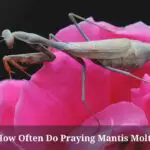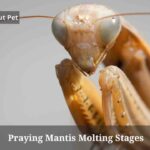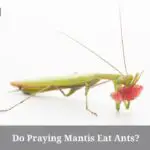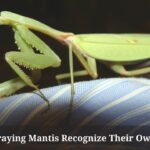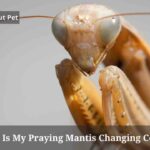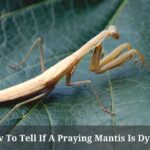The praying mantis is a pet insect that has become popular recently. People choose to care for mantis because they have a unique appearance, raptorial legs, and have a friendly nature. After developing, the mantis goes through molting. It will be challenging for praying mantis owners to know what to do when the mantis goes molting.
Do mantids eat their molts? The mantis do not eat their molt, because they like live prey. But sometimes, mantis will grab anything near them and munch it a little, even if it’s their molt skin.
There is a lot we need to know about molting praying mantis, because they will be vulnerable at that moment. It can’t be touched, and you need to help your pet stay safe. We will discuss it in this article.
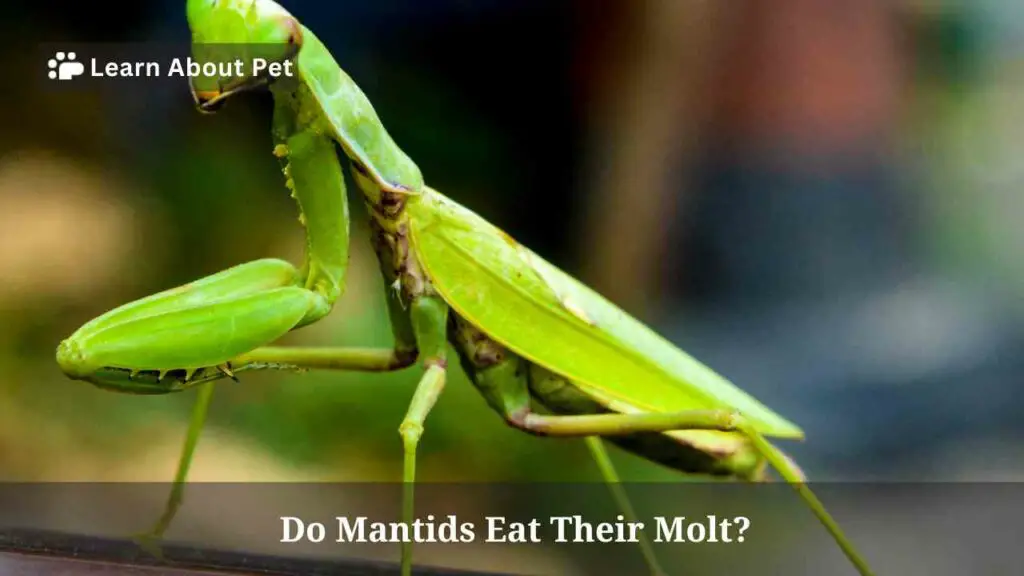
Do Mantids Eat Their Molt?
Mantis do not usually eat their molt because they prefer live prey. But mantis sometimes grab whatever is near them and eat it a little. Not all mantises do this, but it’s not uncommon when you see a mantis do it.
Are Mantis Hungry After Molting?
Mantis will be hungry after molting. Feed the mantis after 24 hours from the time the molt is completed. Mantis will be vulnerable within the day, and mantis refrain from feeding and wait at least one day.
Do mantis eat their molt at night after molt? No, because the mantis is still vulnerable within 24-hour intervals.
What Do Mantis Do When They Molt?
New praying mantis owners sometimes don’t know whether a praying mantis is molting or dying, because some indicative signs of an approaching molt are lethargy, extended and elongated legs, swollen wing buds, erratic vibration-like movements, and inflation of the abdomen.
Some of the things above cause pet owners to panic and think that the mantis is dying, but it’s not.
Be aware that the mantis molting position will occur 2 to 3 days before it occurs, by hanging motionless upside down in their tree or cage. Do not intervene in the molting process until the mantis breaks free of its exoskeleton.
Sometimes mantis mismolt can happen if there are issues in your mantis. Mismolts are complications during the molting process that result in physical deformities. Mismolts can cause the mantis to have crinkled or splayed wings, bent body parts, or a curvature of its entire body.
Do Mantis Eat Their Molt?
No, but sometimes mantis eat a little of everything around them. If you don’t put food out one day after the mantis has finished molting and they are hungry, they can eat their molt skin as a substitute for food.
Do mantis eat their molt during the day? It depends on whether there is food in their cage or not. If you have provided it, the mantis will not eat their molt.
Can A Praying Mantis Molt On The Ground?
No, because praying mantis will climb up off the ground and look for a place to hang on. If mantises are in a cage, they may climb up the lid of their cage.
Mantis Molting Signs
If the mantis starts hanging upside down, that is one of the mantis molting signs. You might expect the mantis to begin to molt in the next 2 to 3 days.
How To Help A Praying Mantis Molt?
Know some mantis molting signs if you want to help them successfully replace their exoskeleton. If the mantis starts to become lethargic, hanging upside down, holding still, and has swollen wing buds, leave them alone until they molt. You can do several things below before the molting process.
| How to help praying mantis before molting process | Explanation |
| Feed less | There’s no point in feeding praying mantis when they are about to molt, because they will not eat at this stage of life. |
| Increase humidity | Praying mantis requires higher humidity to be healthier before the molting process. |
| No handling | Do not handle praying mantis, because their bodies will be very soft after a molt. Let the mantis shed their skin until it falls to the ground. |
| Remove all live insects | All live insects can disturb the praying mantis during the molting process because the mantis cannot move when it is in a molt position. |
Final Verdict
Ensure the mantis can return to its activities after shedding their skin. Do praying mantids eat their molt? It’s not uncommon to see mantises picking up their molt skin to chew on, but most of the mantises don’t do this. Make sure you have a healthy mantis, and feed the mantis the day after the molting process is complete.

Welcome to Learn About Pet. My name is Rajkumar Ravichandran and I love all pets, travel, and amazing food. I write about my passion and personal experience caring for multiple pets in this blog! ❤️
Post Disclaimer
DISCLAIMER: THIS BLOG OR WEBSITE, "Learn About Pet", DOES NOT PROVIDE YOU WITH MEDICAL ADVICE AND IS NOT A SUBSTITUTE FOR MEDICAL ADVICE. ALWAYS GET IN TOUCH WITH YOUR PERSONAL VETERINARIAN AND USE INFORMATION HERE AS GENERAL ADVICE.
The information, including but not limited to, text, graphics, images and other material contained on this website are for informational purposes only. No material on this site is intended to be a substitute for professional veterinary advice, food recommendation, diagnosis, or treatment. Always seek the advice of your veterinarian or other qualified health care provider with any questions you may have regarding a medical condition or for pet food related questions.
